Textured gold makes for a richly natural look that lots of jewelry lovers are choosing over a polished finish.
Heavy, rough, organic. While these industrial adjectives could easily be describing a group of roustabouts, they also apply to one of jewelry’s most luxurious trends: textured gold.
“I want to give my pieces two physical attributes I closely identify with: polish and grit,” says Texan jeweler Debra Navarro, who specializes in this type of characterful gold. “Anything I’ve ever achieved, I’ve done as a result of having polish and grit — a metaphor for education, culture and sheer determination. These two opposing words…are part of each of us. I want my jewelry to express that, almost as a talisman.”
Navarro, who launched her brand five years ago, pours her passion into her jewels: heavy designs of solid 18-karat recycled gold wrapped around rough gems such as spessartite, tourmaline, aquamarine and natural colored diamonds. Texture plays a major role, with grooves planned out in wax models or added after casting by agitating the gold with drill bits. “My approach is to deconstruct the mass-market, perfectly cut, perfectly finished, traditional jewelry styles for a more modern, casual-luxury vibe,” she says.
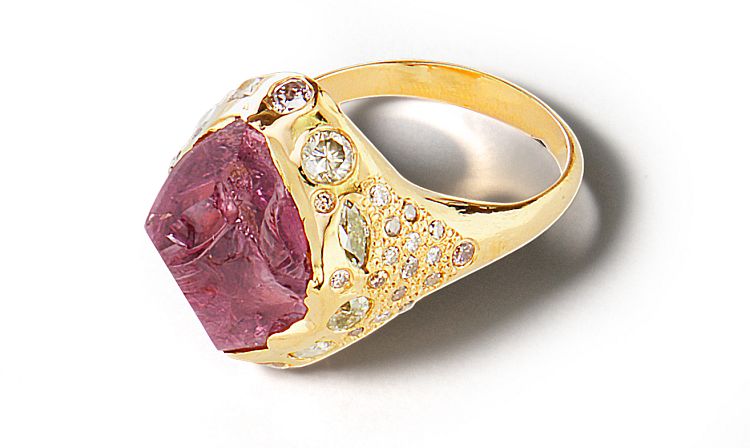
Myriad methods
When it comes to adding texture, there is no strict rule book to follow. Some designers, like Loren Nicole, follow in the paths of the ancients, using historical techniques like granulation or repoussé, while many Italian jewelers like Marco Bicego use fine engraving methods. Others simply have at it with a hammer, such as Gurhan, I. Reiss, Marika Desert Gold or Victor Velyan, which are all masters of the heavy, textured gold look.
In her upstate New York studio, Barbara Heinrich plays with many texturing techniques. “We use matting brushes, pumice powder matting, brass brushing, rolling the gold with other materials such as mesh and paper, carving textures directly into the gold, using sandpaper to create textures…just to name a few,” says Heinrich, whose metal of choice is Hoover & Strong’s 18-karat Royal gold.
Though heavy gold jewels usually come with a price tag that jewelers must preface with the word “investment,” this aesthetic is landing well with shoppers at the moment, making it possible to forget that gold prices have hit a seven-year high.
“I’m either on a good roll, or a trend is on the rise,” says Navarro.
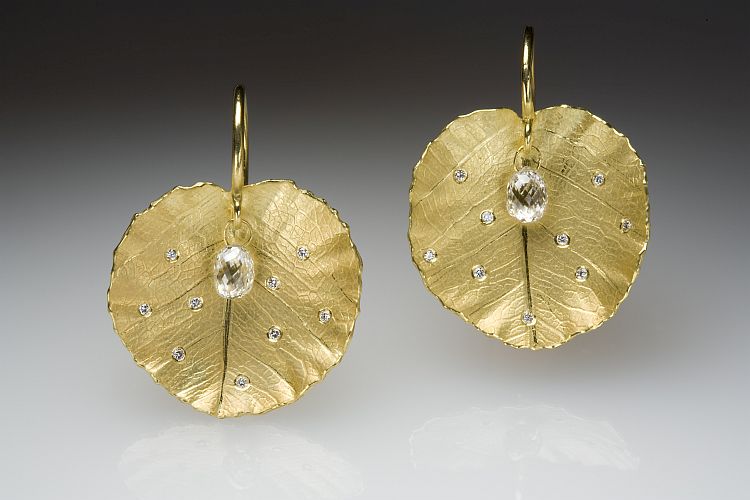
Italian pride
In Italy, at family-run goldsmith Vendorafa, there is also a feeling that this style of jewelry is trumping the slick, highly polished look. “The American market is the most fond of this kind of texture, and we are seeing the trend rise there,” says Daniela Lombardi, the company’s creative director and the daughter of founder Vendorafa Lombardi.
Inspired by the Ancient Greeks, Vendorafa — which has been producing textured gold jewelry since the 1950s — hand-hammers much of its gold, and uses engraving techniques for finer lines.
The choice of gold alloy also has an impact on the final look of a jewel, the creative director notes. “When using yellow gold, the result of our casting with hammering and engraving transforms the metal so the color becomes a more warm-toned, almost silky and seductive, soft, glowing gold hue,” she explains. “When using white gold, we achieve a more contemporary, graphic result for the same piece, and when using rose gold, we have a result that reminds us of a more classical look or antique jewelry.”
Vendorafa is passionate about the hand skills it takes to create these looks. In fact, it’s a founding member of the Fondazione Mani Intelligenti, a foundation that aims to preserve and pass on goldsmithing skills. The group’s goal is to teach and place 1,000 young people in the Italian jewelry industry over the next three years. Lombardi believes a true understanding of the artisanship is what sells jewels like these, and as such, Vendorafa offers training to sales staff, with helpful videos showing the process.
“Once the clients, retailers and end customers understand the time in hours, the manpower, the unique range of steps and techniques and the history behind the hammering and the finish, many feel they are buying wearable art and a collector’s item, not just a new bracelet or ring,” she says. “It is couture versus prêt-à-porter.”
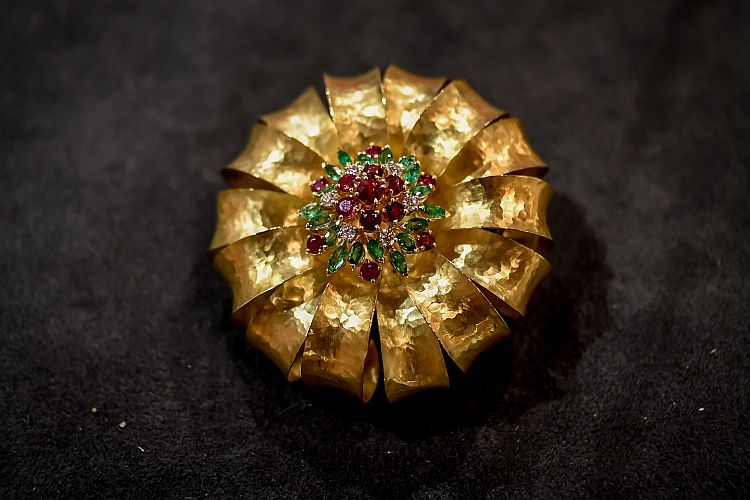
‘Intentionally imperfect’
Another advantage of textured gold jewelry is that it ages well, even on the hands of the most active women.
“Our intentionally imperfect and highly bespoke finishes are meant to share yard work, cooking, hiking with its wearer,” says designer Julez Bryant, whose preference for hammered and matte finishes originated from a lack of formal training. In the 17 years since she launched her eponymous brand, the handmade jewels she creates in her southern California studio have evolved: Now, a more sophisticated satin finish is the company’s calling card. However, its bestseller remains the first ring Bryant ever designed: the hefty, rectangular No.1 dress ring in scratched 14-karat gold, studded with 20 diamonds.
“I do believe heavy gold is trending, and clients can justify their purchase knowing gold will never lose its value,” says Bryant. “Customers love that we don’t cut corners, and they like the weight to our pieces. They feel like they are investing not only in beauty, but a tangible asset. In a world where so many designers are trying to cut costs because gold has skyrocketed — and who can blame them? — it’s never been my look.”
Though the price of gold makes pieces like these increasingly aspirational, it seems that for women who appreciate artisanal crafts, have an understanding of gold’s value as a commodity, and want jewels that will age beautifully with them, such pieces are an investment they are eager to make.
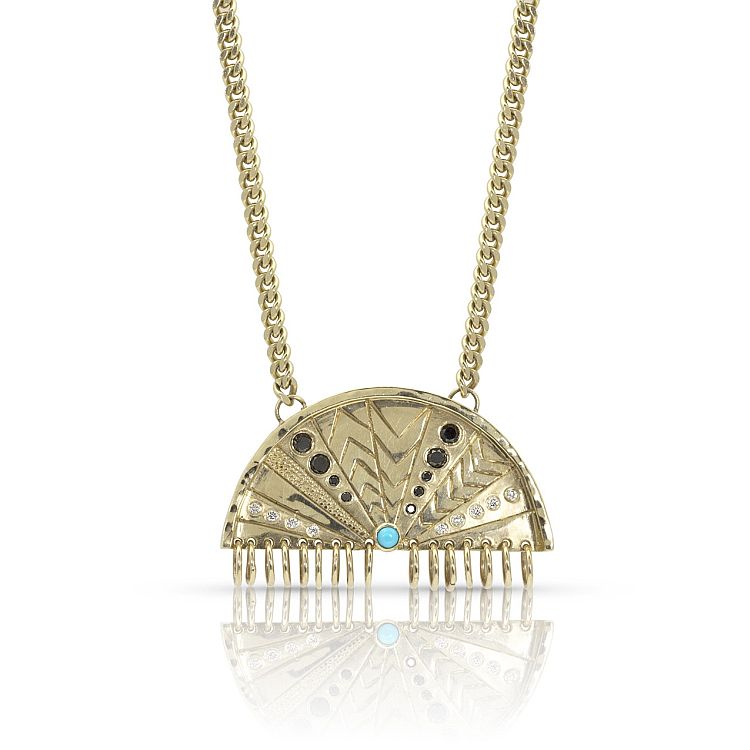
LEXICON OF TECHNIQUES
Hammering: Using hammers to distort the gold’s surface.
Lost-wax carving: Hand-carved wax models provide textured designs to cast.
Granulation: Adding tiny drops of gold to a design to create volume.
Bulino: An engraving technique that builds up fine lines to create texture.
Satin finish: Giving the gold a matte, brushed appearance by scratching the metal.
Repoussé: Hammering metal into relief from the reverse to create 3D shapes.
Scratching: Etching visible grooves into the gold.
Sandblasting: Blasting jewels with silicone or glass beads to roughen the surface.
Roll printing: Using a natural material or prepared design to press a pattern into the gold.
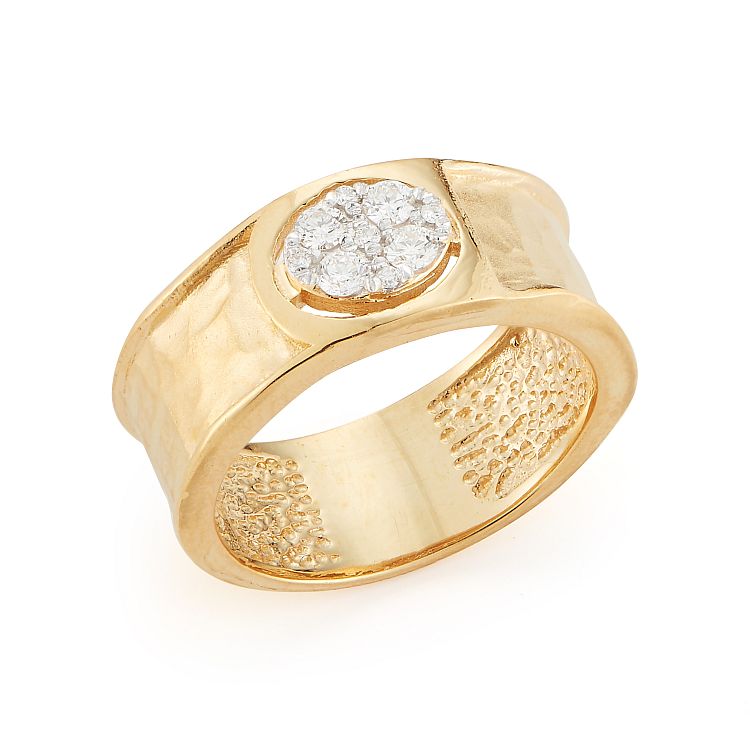
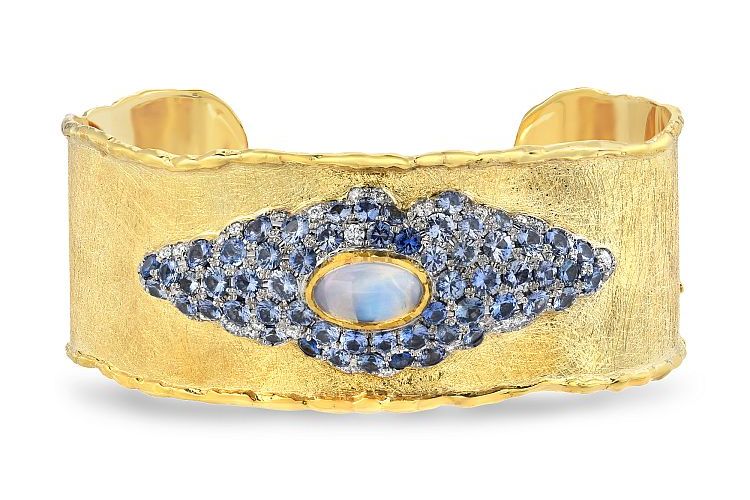
Main image: Vendorafa Dune bangle in 18-karat yellow hammered gold and diamonds.

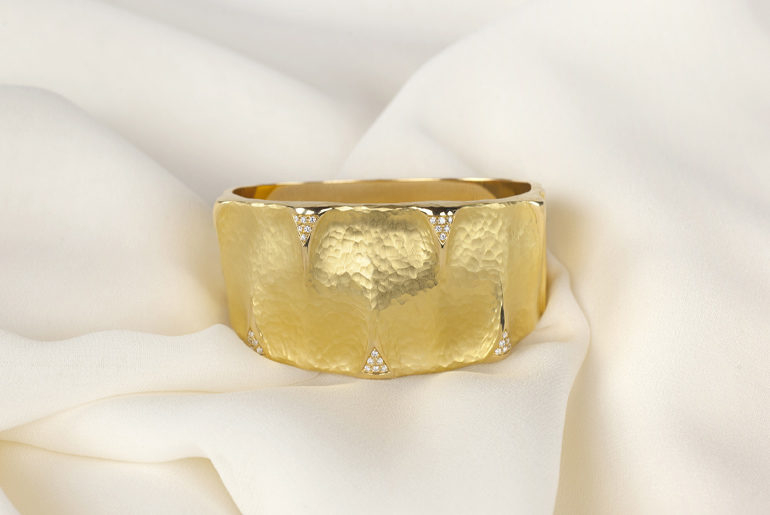
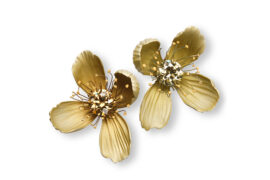

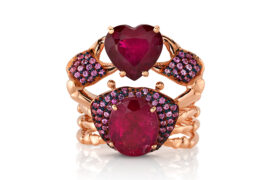
Comments are closed.